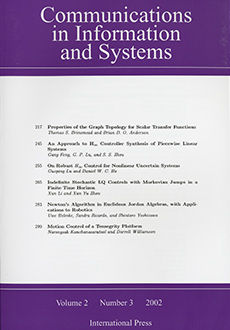Abstract
We present a novel full-rate full-diversity orthogonal space-time block code for QPSK modulation and $4$ transmit antennas based on quaternionic algebra. The code does not result in constellation expansion unlike other full-rate full-diversity codes in the literature. The quaternionic structure of the code is exploited to reduce the complexity of maximum likelihood (ML) coherent decoding from a size-$256$ search to a size-$16$ search. Furthermore, we show how to modify this low-complexity coherent ML decoding rule to derive a non-coherent differential ML decoding rule. Due to the orthogonality of the code, ML differential decoding results in the minimum SNR loss of $3$ dB from coherent ML decoding. Finally, extensive simulation results in a WiMAX 802.16 broadband wireless access environment demonstrate that the proposed code increases the cell coverage area by $1.5$ and $2.6$ folds compared to single-antenna transmission at $10^{-3}$ bit error rate when combined with $1$ and $2$ receive antenna(s), respectively.
Citation
Robert Calderbank. Sushanta Das. N. Al-Dhahir. S. Diggavi. "Construction and Analysis of a New Quaternionic Space-Time Code for $4$ Transmit Antennas." Commun. Inf. Syst. 5 (1) 97 - 122, 2005.
Information





